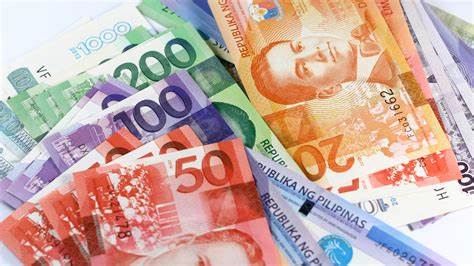Peso surges to 6-month high at 55.9 as dollar weakens
File photo
The Philippine peso bounced back to the 55-level against the weaker US dollar on Friday, marking its strongest close in nearly six months. This comes as new data supported the early easing by the Bangko Sentral ng Pilipinas (BSP) and raised hopes for a bigger rate cut by the US Federal Reserve.
The peso ended the week at 55.905 against the dollar, gaining 30.5 centavos from its previous close of 56.21.
READ: Peso slides to 58 to $1
This was the peso’s strongest performance since finishing at 55.92 versus the dollar on March 19, 2024. The local unit’s best showing yesterday stood at 55.88, figures showed.
Trading was also heavy, with $1.5 billion changing hands. At this point, the peso is above the 56 to 58 assumption of the Marcos administration for this year.
Weak jobs data
Robert Ruben Carlo Asuncion, chief economist at Union Bank of the Philippines, said the dollar retreated after weak jobs data coming out in the United States stoked expectations of a 50-basis point (bp) rate cut by the Fed, larger than the 25-bp reduction that traders penciled in previously.
This, while “resumption of faster disinflation” at home vindicated the BSP’s decision to cut the policy rate by 25 bp to 6.25 percent on August, which boosted the peso.
Article continues after this advertisement
“Latest Philippine jobless data may have also supported the view that the BSP should continue its monetary policy easing,” Asuncion said.
Robert Dan Roces, chief economist at Security Bank, expressed a similar sentiment, adding that the upcoming US unemployment data “could further impact” US dollar-peso prices.
BSP Governor Eli Remolona Jr. had said the market can expect a “calibrated” shift to a less restrictive monetary policy, adding that another 25-bp rate reduction was possible either at the Oct . 17 or Dec. 19 meeting of the policymaking Monetary Board.
Latest data showed inflation slowed to 3.3 percent in August, the lowest level in seven months and easing back to within the 2 to 4 percent target range of the BSP. The central bank had said the lower tariffs on rice, a major food staple of Filipino households, would pull down the prices of the commodity and help keep the headline inflation rate within its target band.
Disclaimer: The comments uploaded on this site do not necessarily represent or reflect the views of management and owner of Cebudailynews. We reserve the right to exclude comments that we deem to be inconsistent with our editorial standards.

